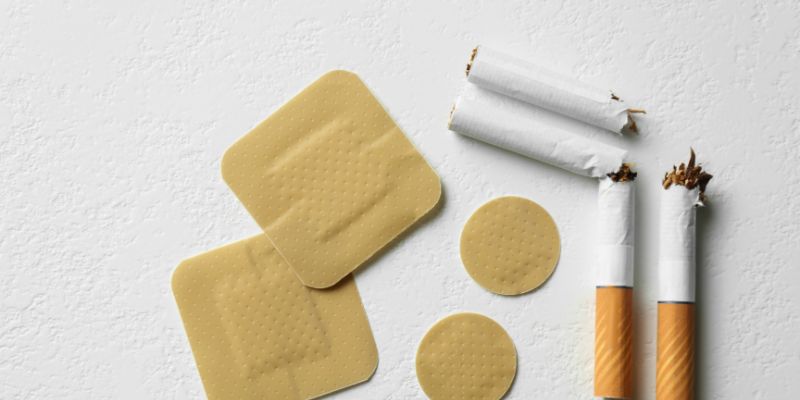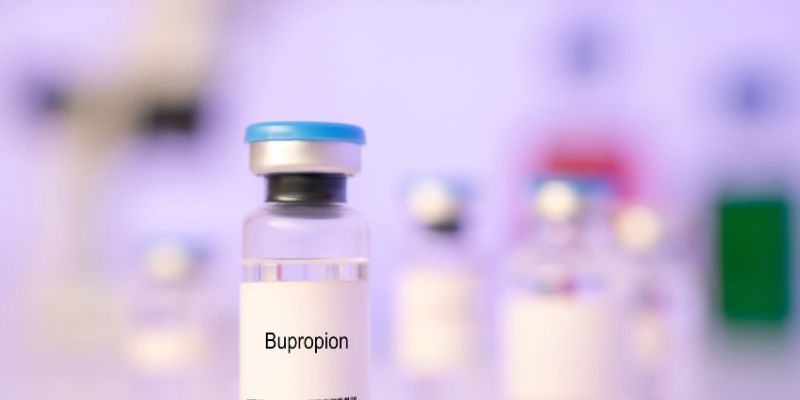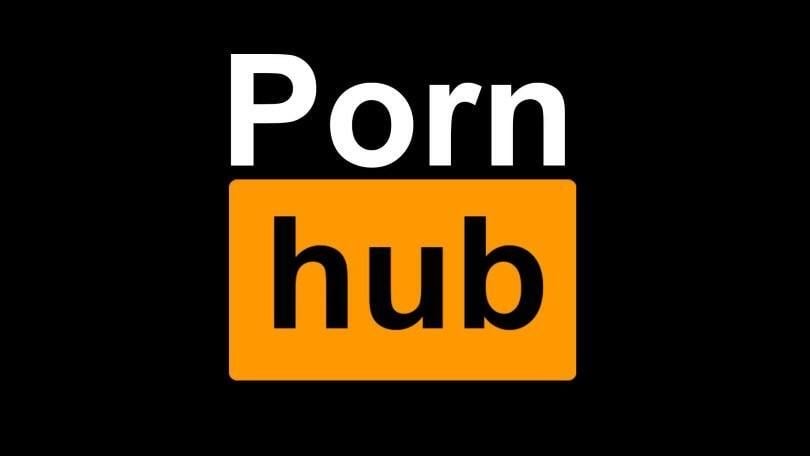Breaking Free: A Comprehensive Guide to Overcoming Nicotine Addiction

As Gordon Grigg, a male business coach from Nashville, Tennessee, I’ve encountered numerous individuals battling various addictions throughout my career. These experiences have profoundly impacted me, witnessing first-hand how addictions can affect both personal and professional lives. Motivated by this, I’ve embarked on a series of articles addressing addiction, with this particular piece focusing on the world’s most dangerous drugs and their destructive effects.
The Top 10 Most Dangerous Drugs In The World
1. Nicotine (Tobacco): The CDC labels nicotine as one of the deadliest substances. It’s shocking to learn that it’s responsible for over 480,000 deaths annually in the United States. Despite its deadly impact on vital organs, particularly the lungs and throat, its legal status and the rise in e-cigarette use among youth remain concerning. The challenge of quitting, often requiring aids like nicotine patches, highlights its addictive nature.
2. Alcohol: Responsible for 88,000 deaths each year in the U.S., alcohol’s danger lies in its ability to lower inhibitions and alter moods. From social drinking to heavy dependence, the journey into alcohol abuse is often insidious, leading to severe health issues and relationship strains. The combination of alcohol with other drugs like cocaine or benzodiazepines increases the risk of fatal overdoses.
3. Fentanyl: This synthetic opioid, 50 times stronger than heroin, contributed to 18,335 deaths in 2016 alone. Initially used for pain relief in medical settings, its potent and addictive nature makes it extremely dangerous, especially when mixed with other street drugs.
4. Heroin: A synthetic opioid derived from morphine, heroin is infamous for its fast-acting, euphoric effects. The CDC reported a drastic increase in heroin-related deaths, highlighting the severity of its addictive potential and the dangers of withdrawal.
5. Cocaine: This stimulant has seen a resurgence in popularity, with deaths rising significantly over the years. Cocaine’s euphoric effects can lead to severe health issues like cardiac arrest and stroke, and its impact on mental health is profound, often leading to paranoia and depression.
6. Methadone: Originally a treatment for heroin addiction, methadone itself poses a high risk of addiction and death. It’s a stark reminder that even substances used in treatment can be dangerous.
7. Oxycodone: Known as the active ingredient in OxyContin and Percocet, Oxycodone’s role in the opioid crisis is significant. The rising death toll associated with its use underscores the danger of prescription medication abuse.
8. Morphine: Another opioid derived from the opium plant, morphine’s high potential for abuse has led to thousands of deaths. Its euphoric effects can make quitting challenging, especially when mixed with other substances.
9. Methamphetamines (Meth): The high addiction rate and severe physical symptoms associated with Meth use are alarming. The increase in meth-related deaths over the years is a testament to its danger.
10. Xanax (Alprazolam): Often prescribed for anxiety, Xanax’s misuse has led to a significant number of deaths, particularly when combined with other substances like heroin or alcohol.
In conclusion, as someone deeply committed to helping individuals overcome addiction, I urge anyone struggling with substance abuse to seek professional help. The journey to recovery is challenging, but there is hope and support available. I’ll delve into each of these drugs in more detail, exploring their impacts and the paths to recovery.
Overcoming Nicotine Addiction: Treatment Methods that Work

In my work as a business coach, I often see the unseen struggles people face, and one of the most underestimated yet widespread is nicotine addiction. Despite nicotine being labeled by the CDC as one of the deadliest substances, leading to over 480,000 deaths annually in the U.S., its legal status and rising popularity, especially e-cigarettes among youth, are alarming. I’ve seen how it ravages the vital organs, particularly the lungs, and throat, and yet the grip of addiction is so strong that many find it nearly impossible to quit without aids like nicotine patches.
The Stealthy Grip of Nicotine: A Client’s Journey

Take, for example, the case of Michael, a successful entrepreneur in his mid-40s. Michael started smoking in college, a habit he picked up to cope with stress. Over the years, it became an integral part of his life, despite knowing its harmful effects. It wasn’t until a serious health scare involving his lungs that he realized the true cost of his addiction. The fear of the disease was a wake-up call, but quitting was a battle he wasn’t prepared for. The addiction had taken root deeply, illustrating the insidious nature of nicotine’s grip.
Understanding the Beast: The Addictive Nature of Nicotine
Nicotine addiction is not just a physical dependency; it’s a complex interplay of psychological, emotional, and social factors. For many, like Michael, smoking starts as a stress reliever or a social habit but quickly evolves into a necessity. The temporary relief or pleasure it provides masks the underlying issues, creating a cycle of dependence. Quitting nicotine is a difficult task because it causes chemical changes in the brain that can have both physical and mental side effects.
Overcoming nicotine addiction can be a challenging journey, but it is certainly possible with the right treatment methods. Nicotine addiction affects millions of people worldwide, leading to numerous health risks and debilitating symptoms. However, by understanding nicotine addiction, recognizing its symptoms, and exploring various treatment approaches, individuals can successfully overcome this addiction and reclaim their health and well-being.
Understanding Nicotine Addiction
Nicotine addiction is a complex condition that occurs when a person becomes dependent on nicotine, a highly addictive substance found in tobacco products. When nicotine is inhaled or ingested, it rapidly reaches the brain, releasing dopamine, a neurotransmitter that triggers pleasurable feelings. This pleasurable effect creates a powerful reward system in the brain, reinforcing the addictive behavior of smoking or using other tobacco products. Over time, the body develops a dependence on nicotine, leading to cravings, withdrawal symptoms, and difficulties quitting.
Breaking Free: The Path to Overcoming Nicotine Addiction
Michael’s journey to quitting began with understanding the nature of his addiction. He had to recognize the triggers and patterns that led him to smoke. This self-awareness was the first step in breaking the cycle. With professional help, including a therapist specializing in addiction, he started to unravel the layers of his dependency. It was a process that required patience, persistence, and support.
One effective strategy was replacing the habit with healthier alternatives. Physical activities like jogging and mindfulness practices like meditation helped Michael cope with stress without turning to cigarettes. Gradually, the hold of nicotine started to loosen.
@nicknyitray Bros really sucking on a flash drive
♬ Blade Runner 2049 – Synthwave Goose
The Role of Community and Support Systems
Another crucial aspect of Michael’s recovery was the support system. Sharing his struggles with family and friends opened up a network of encouragement and accountability. He also joined a support group where he met others on similar journeys. This sense of community was vital in keeping him motivated and on track.
Treatment Approaches for Overcoming Nicotine Addiction

While nicotine addiction may seem daunting, there are various effective treatment approaches available. These treatments aim to address the behavioral, psychological, and physiological aspects of addiction, helping individuals quit smoking or using tobacco products. By combining different strategies and support services, individuals can increase their chances of long-term success in overcoming nicotine addiction.
Behavioral Treatments
Behavioral treatments are an integral part of nicotine addiction treatment, focusing on modifying behaviors and thought patterns associated with smoking or tobacco use. Here are some effective behavioral treatments:
- Behavioral therapies: Behavioral therapy, such as cognitive-behavioral therapy (CBT), helps individuals identify and change patterns of thinking and behavior that contribute to nicotine addiction. CBT equips individuals with coping skills to manage cravings, avoid triggers, and develop healthier habits.
- Motivational interviewing: Motivational interviewing is a counseling technique that aims to enhance an individual’s motivation and commitment to quitting smoking. It involves supportive and non-judgmental conversations, focusing on the individual’s intrinsic motivation to change their behavior.
- Support groups: Support groups, both in-person and online, offer a supportive environment for individuals quitting tobacco use. These groups provide a sense of community, social support, and a platform to share experiences, challenges, and successes in the journey to quit smoking.
In addition to these behavioral treatments, support from friends, family, and healthcare providers can significantly contribute to the success of nicotine addiction treatment. Counseling and psychological support play crucial roles in addressing the underlying emotional and mental health factors associated with nicotine addiction.
Role of Counseling and Psychological Support
@themindhub Understanding #addiction PT1. What do you think 👉 #gabormate #psychology #mentalhealth #foryoupage #fyp
♬ Twenty One Pilots Hometown Slowed Sad Part – Half Angel Half Devil
In the process of overcoming nicotine addiction, counseling and psychological support play pivotal roles. Counseling offers essential guidance and support, aiding individuals in dealing with their addiction. It also assists them in exploring their reasons for smoking and motivations to quit, while providing strategies to manage stress and other triggers. Psychological support is equally important as it addresses mental health concerns associated with nicotine addiction, ultimately contributing to the success of treatment.
Medication Assisted Treatments
Medication Assisted Treatment (MAT) combines behavioral therapy and medications to treat substance use disorders, including tobacco dependence. It’s an effective approach to nicotine addiction treatment. MAT can involve the use of nicotine replacement therapies such as the nicotine patch or nasal spray, along with medications like bupropion and varenicline. These medications help reduce the cravings and withdrawal symptoms associated with quitting smoking, making it easier for individuals to overcome their addiction. Additionally, medical organizations like the Substance Abuse and Mental Health Services Administration and the National Institute on Drug Abuse have endorsed MAT.
Nicotine Replacement Therapy

Nicotine replacement therapy (NRT) is a commonly used medication-assisted treatment for nicotine addiction. NRT involves replacing nicotine obtained through tobacco products with nicotine from alternative sources, helping individuals gradually reduce their dependence. Here are some key points about NRT:
- Nicotine gum, lozenges, and nasal spray: Nicotine gum, lozenges, and nasal spray are NRT products available over-the-counter. These products provide a controlled amount of nicotine, reducing cravings and withdrawal symptoms.
- Nicotine patch: The nicotine patch is another form of NRT. It is a small adhesive patch applied to the skin, which gradually releases nicotine throughout the day. The patch helps manage cravings and withdrawal symptoms, providing a steady nicotine supply.
- Gradual reduction of nicotine dependence: NRT assists in gradually reducing nicotine dependence, allowing individuals to focus on behavioral changes required for quitting smoking. Over time, the nicotine dosage is reduced until the individual no longer requires nicotine supplementation.
- Availability and accessibility: NRT products are widely available, making them easily accessible for those wanting to quit smoking. They can be found in pharmacies, grocery stores, and online platforms.
- Effectiveness of NRT: Research has shown that NRT, especially when used in combination with behavioral treatments, increases the likelihood of quitting smoking successfully. Using NRT products as part of a comprehensive smoking cessation program can significantly improve quitting outcomes.
Bupropion

Bupropion, an antidepressant medication, is another effective medication-assisted treatment for nicotine addiction. Here’s what you need to know about bupropion:
- Smoking cessation aid: Bupropion is approved by the U.S. Food and Drug Administration (FDA) as a smoking cessation aid. It reduces nicotine withdrawal symptoms and the urge to smoke, helping individuals quit tobacco use.
- Reducing depressive symptoms: Bupropion, as an antidepressant, also helps manage depressive symptoms, which are commonly associated with nicotine addiction. By addressing these symptoms, bupropion supports the quitting process and overall mental well-being.
- Stand-alone treatment or combined with NRT: Bupropion can be used as a stand-alone treatment or in combination with NRT products, depending on individual needs and preferences. Combining various treatments may offer a synergistic effect, increasing the chances of successful smoking cessation.
- Sustained-release and extended-release formulations: Bupropion is available in sustained-release and extended-release formulations, allowing for flexible dosing options. Extended-release formulations require once-daily administration, providing continuous symptom relief.
Bupropion can be a valuable tool in nicotine addiction treatment, especially for individuals experiencing depressive symptoms alongside their addiction. Consulting healthcare providers is essential to determine the most suitable medication and dosage for each individual.
Varenicline

Varenicline, a prescription medication, is another medication-assisted treatment approved for smoking cessation. Here are some key points about varenicline:
- Smoking cessation aid: Varenicline acts by targeting nicotine receptors in the brain, reducing nicotine cravings, and decreasing the pleasurable effects of smoking. It is specifically designed to help individuals quit smoking and overcome nicotine dependence.
- Effect on addictive effects of nicotine: Varenicline’s mechanism of action involves selectively binding to nicotine receptors, blocking nicotine from reaching these receptors, and reducing the addictive effects of smoking.
- Oral administration and tablet form: Varenicline is taken orally, usually as tablets. It is available by prescription, ensuring that it is used under the supervision of healthcare providers.
- Efficacy in promoting quitting: Clinical trials have demonstrated that varenicline is effective in promoting long-term smoking cessation, especially when combined with behavioral counseling and support services.
Varenicline offers another avenue for individuals seeking to quit smoking, providing support in managing nicotine cravings and reducing the addiction’s pleasurable effects. It is important to consult healthcare providers to determine the appropriate use of varenicline and potential dosage adjustments.
Innovative Approaches in Treating Nicotine Addiction

In addition to traditional treatments, several innovative approaches are being explored in the field of nicotine addiction. These approaches aim to enhance quitting success rates and improve overall nicotine addiction treatment outcomes.
Transcranial Magnetic Stimulation
Transcranial magnetic stimulation (TMS) is a non-invasive, FDA-approved procedure primarily used for the treatment of major depressive disorder. However, its efficacy in treating nicotine addiction is currently being investigated in clinical trials. Here’s an overview of TMS and its potential role in nicotine addiction treatment:
- Use of magnetic fields to stimulate nerve cells: TMS involves the use of magnetic fields to stimulate nerve cells in specific regions of the brain. It targets and stimulates the prefrontal cortex, an area associated with addiction and craving control.
- Non-invasive procedure: TMS is a non-invasive procedure that does not require surgery or anesthesia. It is performed using a coil, which is placed on the scalp, delivering magnetic pulses to the targeted brain regions.
- Potential benefits for nicotine addiction: Preliminary research suggests that TMS may reduce cravings, improve withdrawal symptoms, and help individuals quit smoking. Ongoing clinical trials aim to determine its efficacy as a standalone or adjunct therapy for nicotine addiction.
While TMS shows promise, further research is needed to establish its effectiveness and optimal application in nicotine addiction treatment. Individuals interested in TMS as a treatment option should consult with healthcare providers and participate in clinical trials, if available.
Nicotine Vaccines

Another innovative approach in nicotine addiction treatment is the use of nicotine vaccines, which aim to prevent nicotine from reaching the brain, thereby reducing the pleasurable effects of smoking. Here’s what you need to know about nicotine vaccines:
- Reducing pleasurable effects of smoking: Nicotine vaccines trigger an immune response, producing antibodies that bind to nicotine molecules. This prevents nicotine from entering the brain, reducing its addictive effects and the pleasurable sensations associated with smoking.
- Innovative treatments: Nicotine vaccines represent an innovative treatment modality, harnessing the body’s immune system to aid in smoking cessation efforts. This approach offers a novel way of addressing nicotine addiction and quitting smoking.
- While nicotine vaccines are still undergoing clinical trials, they hold promise for the future of nicotine addiction treatment. Researchers continue to explore the efficacy, safety, and long-term effects of nicotine vaccines, aiming for effective and accessible treatments to support smoking cessation.
Challenges Faced During the Journey to Quit Smoking
The journey to quit smoking is often accompanied by numerous challenges, requiring perseverance, support, and determination. Here are some common challenges individuals face during their quitting journey:
- Nicotine cravings and withdrawal symptoms: Strong nicotine cravings and withdrawal symptoms can make quitting smoking difficult. These symptoms vary from person to person but may include irritability, cravings, restlessness, and difficulty concentrating.
- Emotional and mental hurdles: Nicotine addiction is often intertwined with emotional and mental health challenges. The process of quitting smoking can bring up a range of emotions, including anxiety, depression, or mood swings, which can make quitting even more challenging.
- Physical and social triggers: Environmental cues, social situations, and stress can often trigger strong cravings for nicotine. Individuals quitting smoking may need to navigate these triggers and develop alternative coping mechanisms to avoid relapse.
Navigating these challenges requires support, counseling, and the use of appropriate treatments, medications, or behavioral therapies. With determination, individuals can overcome these obstacles and achieve long-term smoking cessation.
The Role of Support Services in Overcoming Nicotine Addiction
Support services, such as support groups and social support, play a crucial role in the journey to overcome nicotine addiction. They provide encouragement, guidance, and an understanding community that can significantly impact quitting success.
Importance of Support Groups

Joining support groups is a valuable step in nicotine addiction treatment. Here’s why support groups are important:
- Safe environment to share experiences: Support groups offer a safe and non-judgmental environment where individuals can share their experiences, struggles, and triumphs with others who are on a similar path. This sense of community reduces feelings of isolation and provides emotional support.
- Social support: Support groups offer social support, allowing individuals to bond, connect, and learn from each other. Engaging with peers who understand the challenges of nicotine addiction can provide validation, empathy, and encouragement.
- Guidance and coping strategies: Support groups provide guidance, coping strategies, and practical tips for quitting smoking. Members often share their experiences, offering insights into what has worked for them in quitting smoking and managing cravings.
Support groups can be accessed both in-person and online, catering to individuals’ needs and preferences. Additionally, behavioral treatments, counseling, and support services from healthcare professionals further enhance the quitting process, contributing to long-term success.
Family and Friends as Pillars of Support

The support of family and friends is paramount in overcoming nicotine addiction. Here’s why family and friends serve as pillars of support:
- Emotional support: Family and friends provide emotional support, understanding, and encouragement throughout the quitting process. Their presence and belief in the individual’s ability to quit smoking can boost motivation and confidence.
- Shared journey: Quitting smoking often affects not only the individual but also their loved ones. Family and friends who have experienced or witnessed the challenges of nicotine addiction can relate to the difficulties faced during quitting, fostering empathy and support.
- Accountability: Family and friends can offer accountability, serving as a reminder of the individual’s commitment to quitting smoking. Their involvement can help individuals stay on track, especially during challenging times when cravings may be heightened.
- Practical support: Loved ones can provide practical support, such as assistance with household tasks, distractions during cravings, or participation in smoke-free activities. Their involvement creates a supportive environment that facilitates quitting tobacco use.
Family and friends are integral to the quitting process, providing a strong support system that encourages, uplifts, and reinforces the individual’s commitment to quitting smoking.
Are there any side effects of using medication to overcome nicotine addiction?
While medication-assisted treatments are effective for nicotine addiction, it’s important to be aware of potential side effects. Here are some possible side effects associated with medications used to overcome nicotine addiction:
- Nausea: Some medications, such as bupropion, can cause nausea as a side effect. This usually subsides over time but should be monitored and reported to healthcare providers if persistent or severe.
- Insomnia: Insomnia, or difficulty sleeping, may occur as a side effect of certain nicotine addiction medications. Adjusting the timing or dosage of medications can often help alleviate this side effect.
- Headaches: Headaches can occur as a side effect of medication use, particularly during the adjustment period. If headaches persist or worsen, individuals should consult healthcare providers for further evaluation and management.
- Suicidal thoughts: In rare cases, individuals using certain nicotine addiction medications may experience thoughts of self-harm or suicidal ideation. It is crucial to seek immediate medical assistance if such thoughts arise.
It’s important to note that side effects vary from person to person, and not everyone will experience them. Healthcare providers closely monitor individuals undergoing medication-assisted treatments, adjusting medications or dosages as needed to manage side effects effectively.
Conclusion
@madialysefitness stopping is the absolute BEST thing you can do for yourself. I know how hard it is to went out but feel like you don’t know how🖤 #vaping #nicotineaddition #juul #juuling #vape
♬ if it’s real, then i’ll stay – bonjr
Michael’s story is a testament to the power of resilience and the possibility of change. It shows that while the journey to overcoming nicotine addiction is challenging, it is not insurmountable. With the right mindset, tools, and support, anyone can break free from the clutches of this addiction.
As we navigate the complexities of addiction, stories like Michael’s remind us that every step towards a healthier life is a victory. If you or someone you know is struggling with nicotine addiction, know that help is available and recovery is possible. Embrace the journey with courage and hope, and step into a life of greater health and fulfillment.
In conclusion, overcoming nicotine addiction is a challenging journey, but it is not impossible. With the right treatment approaches and support, you can break free from the grip of nicotine and lead a healthier, smoke-free life. Behavioral treatments and counseling can help you address the psychological aspects of addiction, while medication-assisted treatments like nicotine replacement therapy, bupropion, and varenicline can aid in managing cravings and withdrawal symptoms. Innovative approaches, such as transcranial magnetic stimulation and nicotine vaccines, are also being explored. Real-life success stories serve as inspiration and remind us that quitting is possible. Support services, including support groups and the unwavering support of family and friends, play a crucial role in this journey. Remember, you are not alone, and there is help available to overcome nicotine addiction.
Breaking Free: A Comprehensive Guide to Overcoming Nicotine Addiction Read More »








